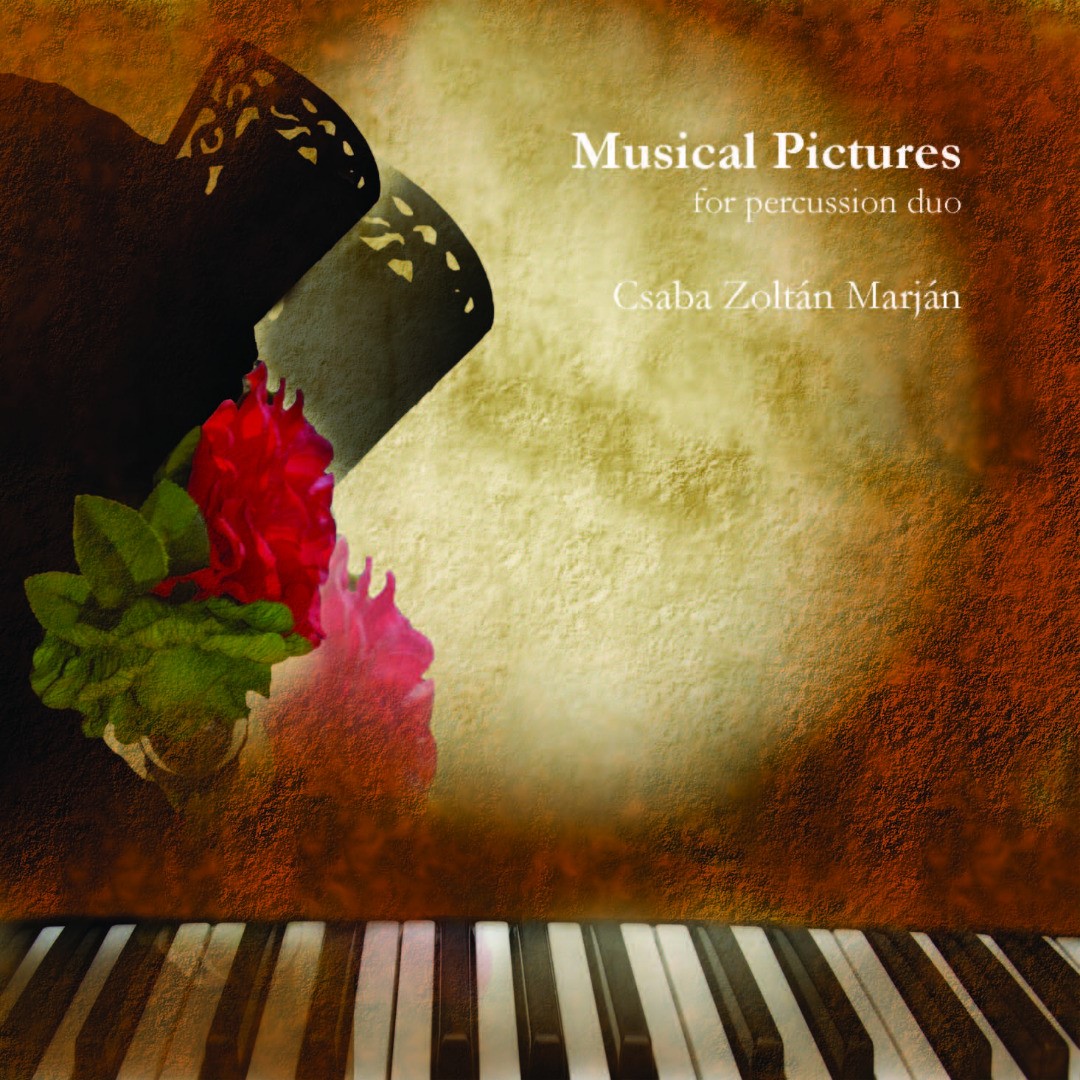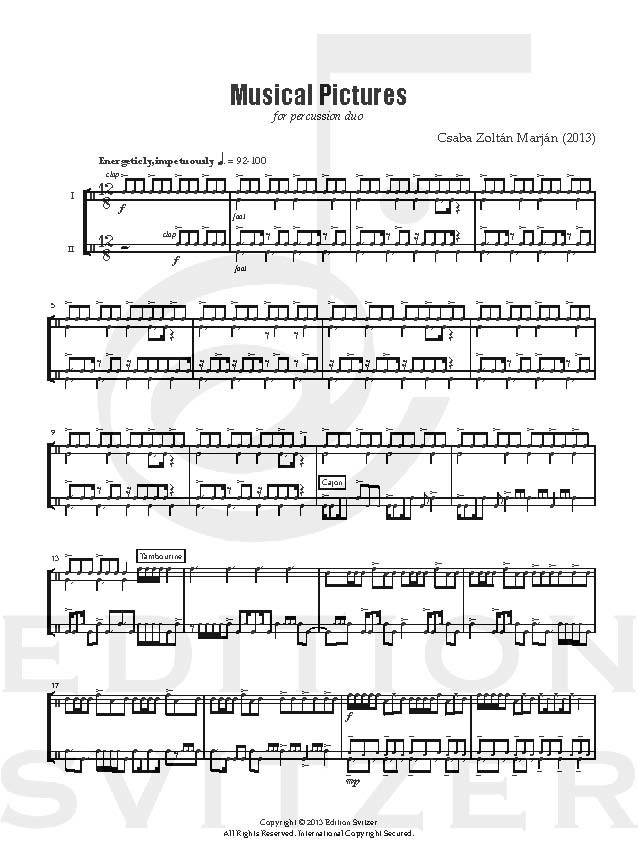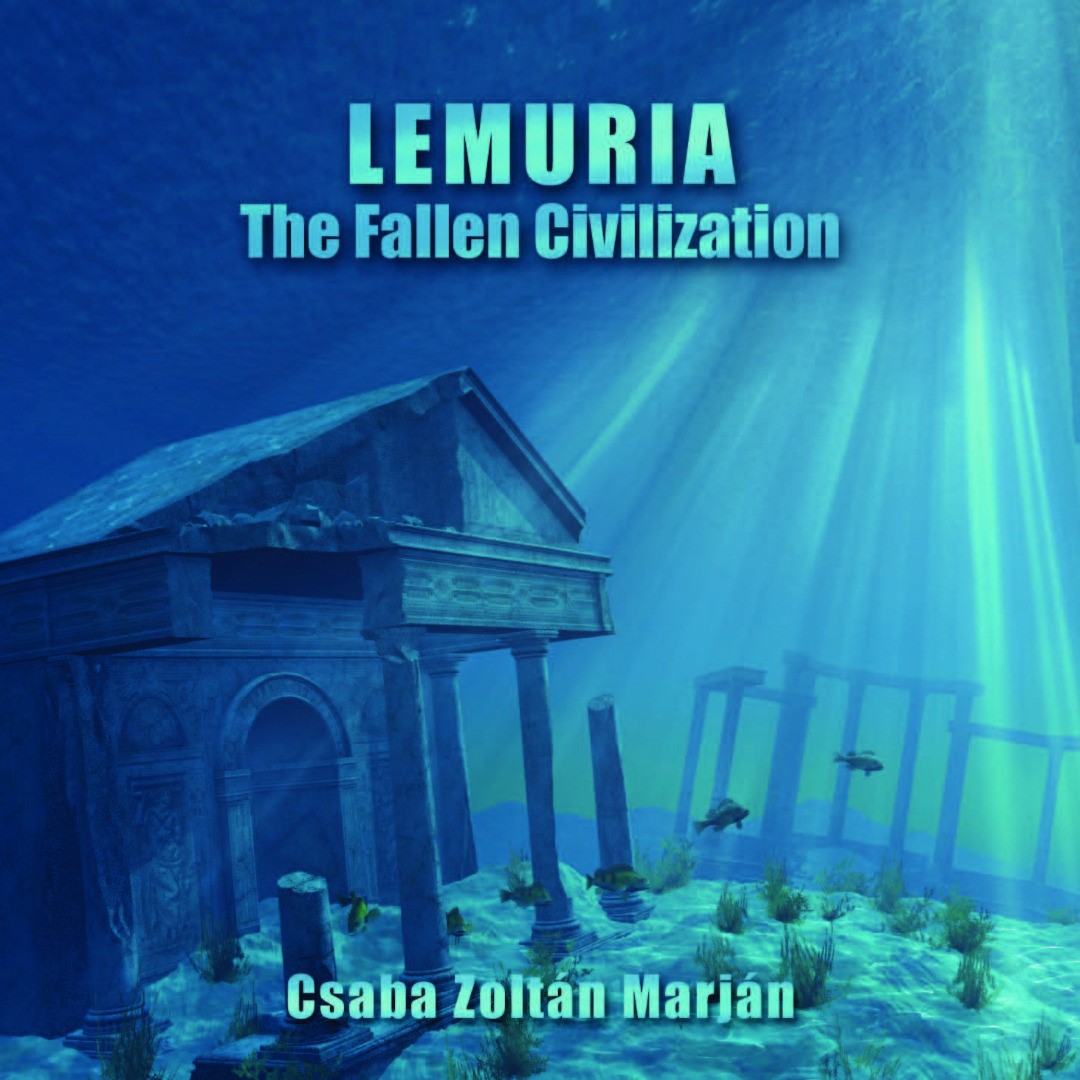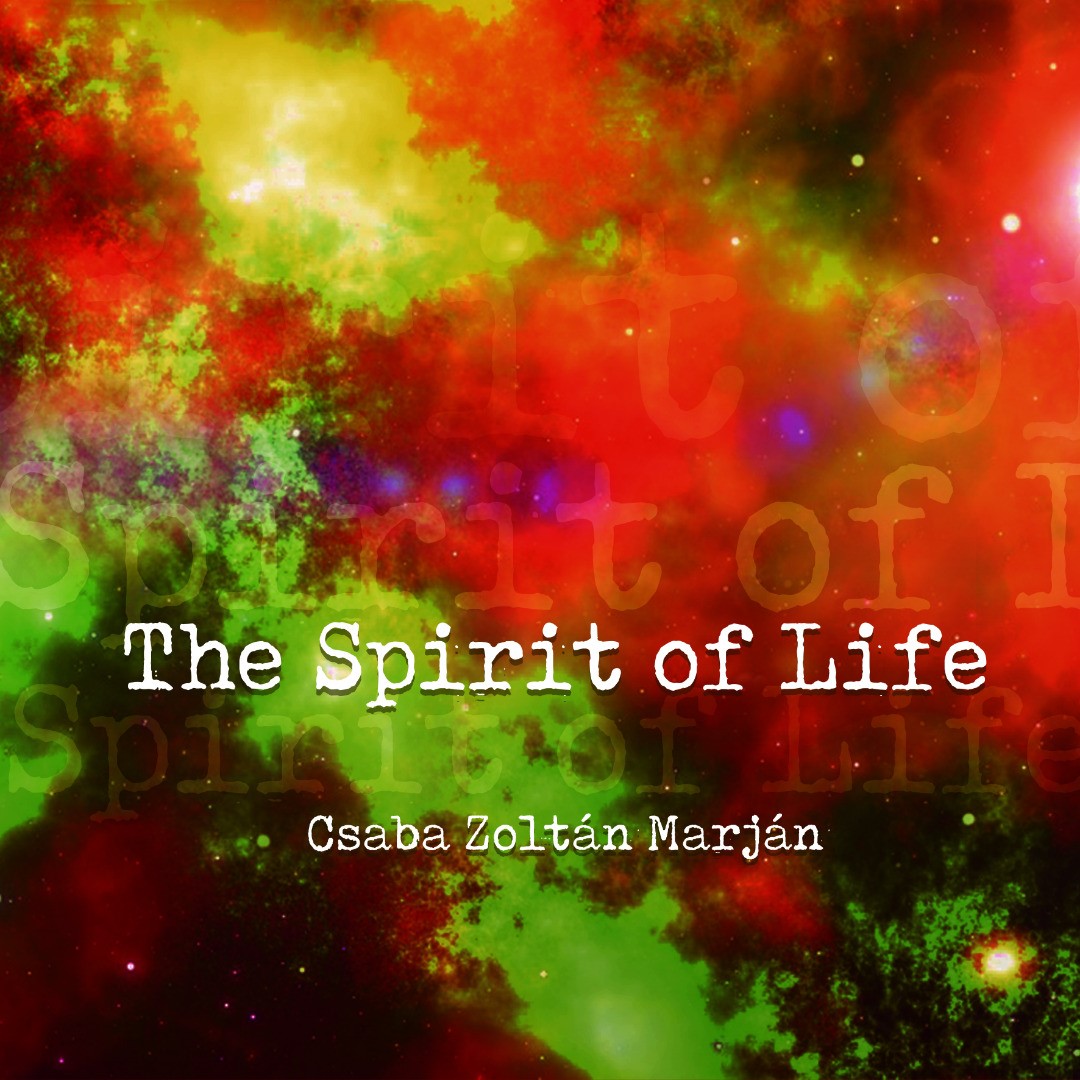
Musical Pictures
Composer: Csaba Zoltán Marján
Instrument: Percussion Duo
Level: Advanced
Published: 2013
Price: €25.00
Item details
-
Description +
-
Duration: 7 min.
In 2012, Gabor Palotas (H) and Matthew Andreini (USA) percussion performers set up a project entitled creating new music for percussions with the aim to help the birth and promotion of new duos. They invited three American and three Hungarian composers to compose percussion duo pieces to be performed in a series of concerts. This piece was born in response to this invitation.
Csaba Marján created his composition relying on typical flamenco elements and Astor Piazzolla's music. Flamenco is a generic term which refers to the music and dance styles spread by Gypsy people in Andalusia. Its oldest form is the song to which instrumental accompaniment and dance can be attached. Astor Piazzolla's music is influenced primarily by the Argentinean folk music: the tango, though creating the musical genre called new tango he used jazz and elements of the Italian opera as well.
The compositions consist of three main sections. The first one is a fast 12/8 meter material, based on simple rhythmic elements on the cajon, tambourine and by slapping. After this short introduction one of the players switches to the vibraphone, while the other keeps on playing the cajon maintaining the energetic tone. Later the marimba joins the vibraphone changing the mood of the piece softer and calmer. The middle part is slow and calm, where the tone becomes melancholic and dreamy by the improvisation-like melody above the ostinato accompaniment. In the third section the melodical material from the first part returns, though here the marimba accompanies instead of the cajon.
-
-
Instrumentation +
-
Percussion Duo:
1 Vibraphone
1 Marimba
Various handperc.
-
-
Watch+
-
About the composer +
-
Csaba Zoltán Marján was born in Nyíregyháza, Hungary in 1983. He started to play the piano at age of 8. In 1998 he was admitted to the Secondary School of Art Nyíregyháza where he began his percussion studies with Csaba Joó. He continued his studies under the guidance of István Szabó at the University of Debrecen Faculty of Music and obtained his Master Degree in Percussion Performance and Teaching in 2007. He played in numerous orchestras such as the Debrecen Symphonic Orchestra, Helsinki Philharmonic Orchestra, the Helsinki Radio Symphonic Orchestra and the Avanti! Chamber Music Ensemble. He is currently employed by the Budafoki Dohnányi Ernő Symphonic Orchestra (Budapest) and is studying Music Performance/Percussion at the Sibelius Academy in Helsinki at the same time.
He won the following prizes: 1st prize in 2005, 3rd prize in 2004, 2nd prize/special award in 2003 at the National University Brass & Percussion Solo Competition in Hungary.
During his university studies Mr. Marján was a member of the SONUS Percussion Ensemble. The main purpose of this group was to perform and to popularize the contemporary music for percussion. This ensemble performed at a number of festivals and concerts in Hungary and abroad as well. At this time Mr. Marján started to be interested in composing and he made several transcriptions for this chamber ensemble. After these transcriptions he has decided to work on his own musical ideas. His first composition was born in 2008 for solo marimba.
For more information please visit the composers website www.csabamarjan.com
-
-
Reviews +
-
Review (Percussive Notes, May 2014)
There is nothing like a high-energy opening to capture the attention of an audience! Although most will readily associate the beginning with Aurel Hollo’s “Jose/beFORe JOHN5,” this composition quickly evolves into its own memorable work. The introduction featuring hocketing hand clapping eventually moves to a duet for cajon and tambourine. Using the tambourine in a non-traditional way, Csaba Marjan creates an intriguing array of colors out of the instrument. A descriptive page of notes will help a performer understand the notation. However, it will take some extra time in the practice room to achieve the dexterity needed to perform the various techniques.
Maintaining the intensity from the introduction, the second section is scored for vibraphone and cajon. The vibraphonist will be left to his or her own devices, as there are no stickings indicated. However, advanced four-mallet facility will be needed to execute the passages. While navigating through various time signatures, including 9/8, 4/4, 3/8, and more, the performers must also have a musical maturity to capture the expressive markings between “Rhythmically,” “Cantabile,” and “Forecfully.” Transitioning to a mood of tranquility, the middle section uses an improvisatory melody in the vibraphone supported by the marimba. The influence of Astor Piazzolla’s tango music is apparent. The final section reaches a fiery dance that includes intricate dialog between the two parts.
I highly encourage you to watch Marjan perform both parts in his YouTube video. The high-caliber performance sets a standard that any duo should aim to achieve. After viewing, I think you will quickly recognize this is going to become a popular work in the repertoire. The publisher’s website exclaims “Hottest Release of 2013.” I would agree!
—Darin Olson
-
-
Credits +
-
Front Cover graphics and layout: Ronni Kot Wenzell
Engraving: Csaba Zoltán Marján & Johan Svitzer
Printed in Copenhagen, Denmark
Copyright © Edition SVITZER
www.editionsvitzer.com
-








